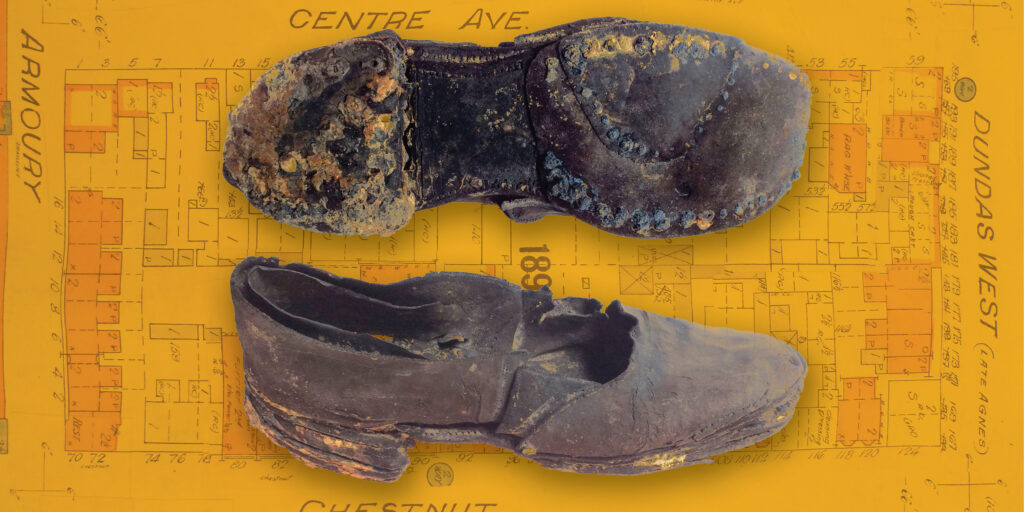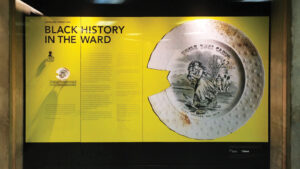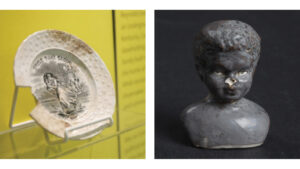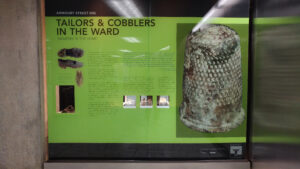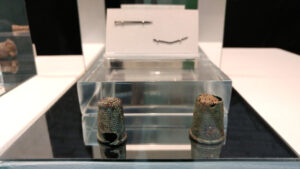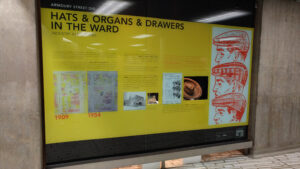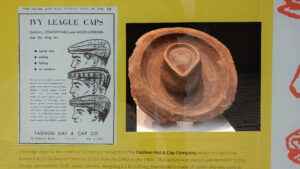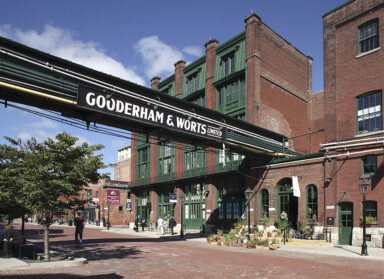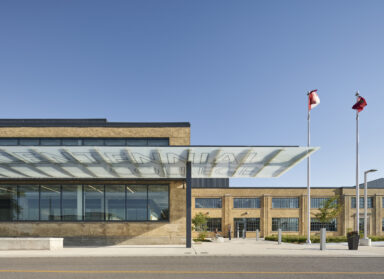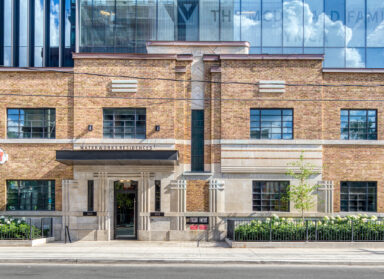Just a few steps northwest of Toronto’s city hall is a quiet, empty plot of land and a former parking lot that will soon be the home of the new Toronto courthouse. But long before this site was just a place to park, it was a bustling part of St John’s Ward (The Ward), an area where newcomers to Toronto established themselves for over a century. In 2015, Infrastructure Ontario (IO), on behalf of the Ministry of the Attorney General, led a complex excavation and archaeological dig of the new Toronto courthouse site which revealed tens of thousands of artifacts from The Ward, providing an unprecedented level of insight into Toronto’s early multicultural history. As part of the heritage interpretation efforts for the site, IO and the City of Toronto developed a partnership to create opportunities to share the artifacts and their stories in four display cases at City Hall.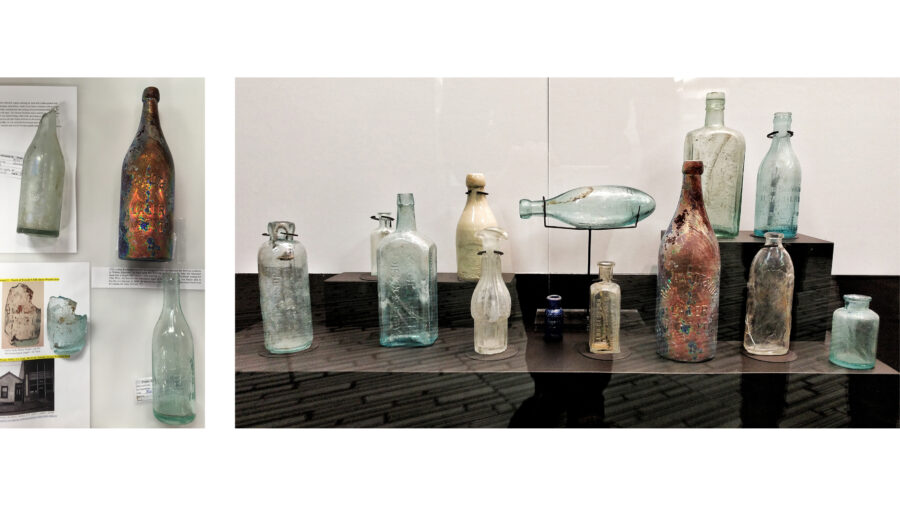
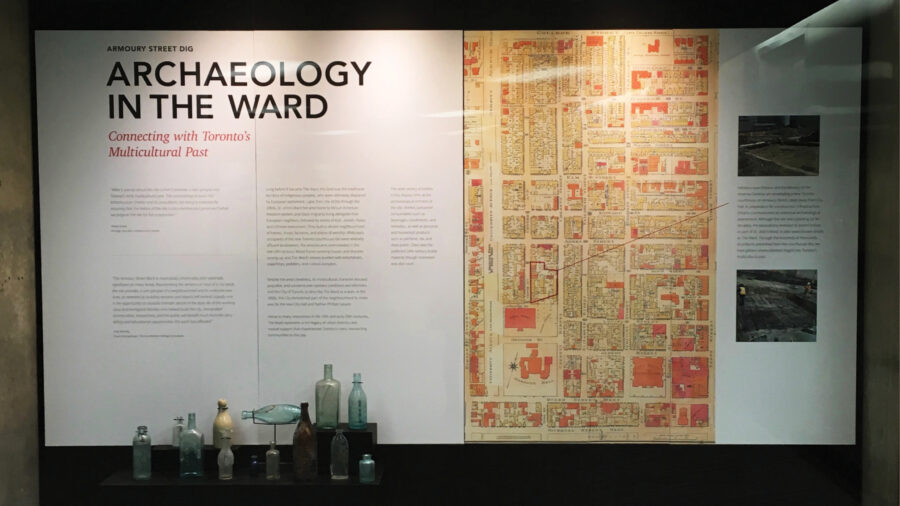
ERA Architects is no stranger to the histories related to The Ward—Michael McClelland and Tatum Taylor helped to literally write the book. As heritage professionals and editors of ‘The Ward: The Life and Loss of Toronto’s First Immigrant Neighbourhood’ (Coach House Books, 2015), they were well positioned to approach the exhibition project with a comprehensive understanding of the site context along with the ability to provide powerful interpretations for the subjects reflected by the artifacts. ERA has been pleased to offer our expertise in this unique documentation of Toronto’s history, providing contextual research and interpretation for emergent themes, as well as designing the exhibit spaces in collaboration with City of Toronto Museums and Heritage Services.
The first of many planned exhibit installations was officially opened in February 2017 with the Mayor’s Reception for Black History Month and featured stories and important artifacts focused on Black History in The Ward, including the foundation stones of the British Methodist Episcopal Church, and a rare Black doll’s head.
We are excited to announce the latest installation of the ‘Armoury Street Dig’ series of exhibits at City Hall has opened this past week. This latest installation focuses on ‘Work in the Ward,’ showing that with the rapid industrialization of the late 19th century, manufacturing moved from homes to factories. In The Ward, this industrial and social shift can be seen clearly, with factories steadily replacing houses between 1895 and 1950. The exhibit is open now and on view during regular public hours in city hall’s main floor rotunda, located adjacent to both the east and west elevator bays, and will be on display through spring of 2018.
In the west exhibit cases, artifacts from the ‘Armoury Street Dig’ highlight two 19th-century household industries that were prevalent on the site: shoemaking and tailoring. The excavation site includes one of the largest archaeological collections of 19th and early 20th-century shoes ever unearthed in Canada, most too fragile to display but documented by photographs and reproduction tools. Other artifacts on display include tools commonly used by tailors and seamstresses in the period: straight pins, buttons made of ceramic and glass, thimbles, wooden spools, and bodkins.
In the east exhibit cases, industry in factories is examined through narratives that range from small-scale family operations such as the Edward Lye and Sons Church Organ Builders which operated first out of their home, to the large-scale T. Eaton Co. Tent and Awning Factory on Chestnut Street. On display are two moulds used in mass production: one small drawer handle mould, likely used in furniture manufacturing on the site, and a large rubber hat mould used to form men’s brimmed felt hats from the Fashion Hat & Cap Company, which occupied the former Eaton’s factory on Chestnut Street from the 1940s to the 1960s.
The exhibit is on view during regular public hours in city hall’s main floor rotunda, located adjacent to both the east and west elevator bays, and will be on display through spring of 2018.
Infrastructure Ontario is creating an online archive of past exhibit displays available at infrastructureontario.ca/armourystreetdig
Link to the Toronto Star’s coverage: https://www.thestar.com/news/immigration/2018/01/11/new-exhibit-sheds-light-on-torontos-early-immigrant-entrepreneurship.html
Related content:
https://www.eraarch.ca/2015/the-ward-a-new-book-coming-2015/
https://www.eraarch.ca/2015/the-ward-a-new-book-update/
https://www.eraarch.ca/2017/coming-up-the-ward-songs-and-sounds-of-a-lost-toronto-neighbourhood/
Post by guest writer Carl Shura.
All photos courtesy of ERA Architects and TMHC.
